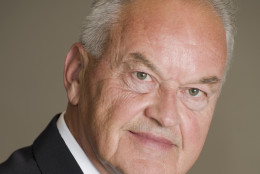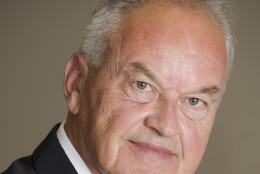NARFE
-
Every year during Open Season only a small number of federal workers and retirees change health plans, but Senior Correspondent Mike Causey says what if your plan dropped you?
November 01, 2016 -
The Postal Service wants to set up its own health plan for workers and Senior Correspondent Mike Causey says non-postal workers should pay attention.
October 26, 2016 -
Most Federal Long Term Care Program policyholders chose to accept higher premiums or took advantage of special benefit reduction options during this summer's enrollee decision period. Premiums rose for about 264,000 active and retired federal employees by as much as 126 percent.
October 21, 2016 -
The House Oversight and Government Reform Committee is concerned about four agencies that had particularly high retirement processing error rates in September. The Social Security Administration and departments of Agriculture, Interior and Veterans Affairs topped the list. Congress now wants the Government Accountability Office to review the process that agencies and the Office of Personnel Management each use to review a retirement claim.
October 20, 2016 -
What might a Trump administration look like for federal managers? What would another Clinton in the Executive Office mean? Regardless of who wins the presidential election, by Nov. 9 the government workforce needs to be ready to go in any direction.
October 17, 2016 -
The National Active and Retired Federal Employees Association released its voting scorecard for the 114th Congress. The scorecard includes a breakdown of votes from each congressional member and how they stacked up to NARFE's position on various legislation impacting the federal workforce.
October 03, 2016 -
Federal employees and their families will see a 4.4 percent increase in their Federal Employee Health Benefit premiums next year. But FEHBP participants will pay 6.2 percent toward their health care costs. The government share is 3.7 percent.
September 28, 2016 -
It's good news, bad news time again for federal retirees and folks who get Social Security, and as per usual Senior Correspondent Mike Causey says it’s the same thing.
September 20, 2016 -
According to the latest count from the Office of Personnel Management, less than 100 federal employees have applied to their agencies' phased retirement program. It's been roughly two years since OPM released final regulations on phased retirement and gave agencies the green light to begin accepting applications.
August 16, 2016 -
The Office of Personnel Management says long-term care insurance members will see premiums rise by as much as 126 percent. Participants can start looking at their package options July 18.
July 18, 2016 -
Congress and members in the federal community are at a standstill over how to change the Windfall Elimination Provision (WEP) for federal employees and retirees in the Civil Service Retirement System. House Ways and Means Committee Chairman Kevin Brady had a bill that would lessen the WEP penalty, but last-minute changes to the legislation derailed its official introduction to Congress.
July 14, 2016 -
The House passed a bill that would change the way agencies discipline and remove federal employees and members of the Senior Executive Service. One provision would put all SES members under the same, expedited disciplinary process that senior executives at the Veterans Affairs Department had until the Justice Department challenged its constitutionality.
July 06, 2016 NARFE's Jessica Klement and John Hatton join host Mike Causey on the first half of today's Your Turn to discuss reforms to the Windfall Elimination Provision or WEP. Later in the show. Brig. Gen. Mike Meese (Ret.) will talk about what's pending in the Defense Authorization Act and a change to the military TSP plan. July 6, 2016
July 04, 2016-
The Defense Department announced Tuesday that members of its civilian workforce can now seek phased retirement from their positions, a concept that’s received little attention from federal agencies until now.
June 21, 2016 Federal benefits expert Tammy Flanagan joins host Mike Causey to discuss Social Security for active and retired feds, and the different ages when people become eligible for full benefits. June 22, 2016
June 20, 2016












